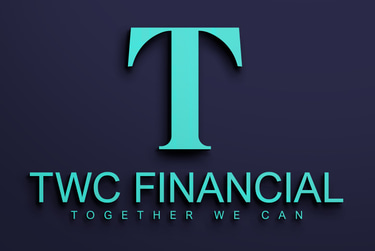The Foundation of Your Retirement
How RRSPs help meet your financial goals
Taimoor Tariq
1/3/20247 min read


$35,000
2023 RRSP deduction limit -or- 18% of your earned income the previous year - whichever is lower
Maximum amount you may be able to borrow from your RRSP to buy your first home
The age when contributions stop and you need to convert RRSP to an income option (like a RRIF)
$30,780
71
What is an RRSP?
An RRSP is a registered investment account that lets you save for your retirement by deferring taxes on your investment earnings. This means more of your money can stay invested and grow faster.
An RRSP also helps you lower your tax bill today, by allowing you to deduct RRSP contributions from your taxable income. By the time you retire you will likely be in a lower tax bracket, so withdrawals are taxed at a lower rate than today
How RRSPs work?
You can hold a wide range of investments within an RRSP, depending on the type of plan, including stocks, bonds, guaranteed investment certificates (GICs), and mutual funds. Investment income earned from these investments, is tax-deferred in the RRSP until you withdraw the funds.
How much you can contribute annually is subject to a maximum contribution amount, known as your RRSP contribution or deduction limit. Your RRSP contribution limit for 2023 is equal to 18% of your 2022 earned income, or $30,780 (whichever is lower) plus previous unused contribution room less any pension adjustments.
What is your RRSP contribution limit?
Generally, your contribution limit is calculated by the Canada Revenue Agency based on these 3 factors:
Total of your unused deduction room from the previous year
Now add the smaller amount of:
- 18% of the earned income you reported on your tax return last year
- $30,780 (the annual limit for 2023)Then subtract any pension adjustment from the previous year (if applicable)
Contribute regularly for tax-deferred growth
Contribute regularly to see your money grow, tax-deferred. Since the investment income you earn in an RRSP (interest, dividends, or capital gains) is not taxed until it’s withdrawn, it has the opportunity to grow faster than it would in a non-registered account. Another way to save faster is by setting up regular (weekly, monthly, etc.) automatic contributions into your RRSP.
With RRSPs, you won’t have to pay taxes on any investments growing in the account – at least, not until you start withdrawing funds from it.
Plus, your contributions are tax deductible. This means that you can use your contributions to lower your current taxable income if you have contribution room available. However, if you want to use your RRSP contributions to reduce your tax bill, you’ll have to make sure you make all your contributions by a specific deadline.
Withdraw money to use as income in retirement
By December 31 of the year you turn 71, you must stop contributing to your RRSP and convert it to an income option such as a Registered Retirement Income Fund (RRIF) or annuity. A RRIF is like an extension of your RRSP, but instead of putting money in, you withdraw money to use throughout retirement.
You may be able to borrow from your RRSP for other purposes, as well.
Here are a few things to know:
Withdrawals from your RRSP or RRIF are considered part of your taxable income.
Withdrawals can affect your eligibility for government benefits, such as Old Age Security (OAS).
Early withdrawals from your RRSP will raise your tax bill and have a withholding tax deducted upfront.
The Home Buyers’ Plan may let you borrow up to $35,000 from your RRSP to buy your first home.
The Lifelong Learning Plan may let you borrow up to $10,000 in a calendar year (to a maximum of $20,000) from your RRSP to cover training or education for yourself or your spouse.
When you’re ready to retire or you turn 71, your RRSP converts to a RRIF where you must withdraw your minimum annual amount. Alternatively, you can purchase an income annuity. You don't pay tax when you use RRSP money to buy a payout annuity.
Enjoy a lower tax bill in retirement
RRSPs can help you strategically plan your taxes so that you can save on taxes both during the:
Contribution phase, where you put in money at a higher rate,
Withdrawal phase, where you can enjoy a lower tax bill without compromising your lifestyle.
In retirement, you’ll likely be in a lower tax bracket, as you need less money to pay for large expenses like a mortgage – assuming you’ve paid it off before you retire. Typically, you’ll also no longer need to be saving for retirement. In addition, if you have any children, they’ll have started their own independent lives, so you won’t be paying for their expenses, like education. This means you’ll likely have to pay a smaller tax bill too when you withdraw from your RRSP.
What happens if you go over your RRSP limit?
You will be taxed 1% per month on any amount that is more than $2,000 over your contribution limit. If you don’t pay the additional tax within 90 days after the calendar year, you’ll face late-filing penalties or interest charged.
The Canadian Retirement Agency (CRA) is actually pretty forgiving if you contribute too much to your RRSP — but only to a point. They start you with a nice bit of cushion: any amount up to $2,000 over your annual limit won’t be penalized (though it also won’t be considered tax-deductible). It’s when you go over that amount that the trouble starts.
Soon after that 2,001st dollar hits your account, the CRA will likely mail you a notice that you’ve over contributed and encourage you to vamoose that excess dough. Should you fail to, you’ll be assessed a penalty of 1 percent of the excess, every month you‘re over the limit. Take too long to pay those penalties, and you’ll also earn yourself late fees, which are even pricier. Fortunately, the CRA understands that mistakes happen, so if you can show that you were not trying to take advantage of the system — say you just screwed up the math — you can apply to have the penalties waived.
Withdrawing from RRSP before Retirement
Home Buyers’ Plan (HBP)
The HBP lets you withdraw up to $35,000 from your RRSP to buy or build your first home in Canada – either for yourself or a relative with a disability. You can withdraw money from your RRSP to buy or build your first home as part of the Home Buyers’ Plan. You must re-contribute the amount that was taken out for the down payment over a 15-year period or you will be taxed on it. The 15-year repayment period begins 2 years after the calendar year in which you make the withdrawal.
Lifelong Learning Plan (LLP)
The LLP lets you withdraw up to $10,000 per year (up to a maximum of $20,000) from your RRSP for you, your spouse or your common-law partner. You can use the funds for full-time education or a training program. You must re-contribute the withdrawn amount over a period of several years or you will be taxed on it.
Other types of RRSPs
Apart from personal RRSPs, which you can set up in your own name, there are 2 additional types of RRSPs you’ll come across: spousal RRSPs and group RRSPs. But regardless of what type of RRSPs you have and how many you have, you’re still responsible for staying within your contribution limit.
Spousal RRSPs
A spousal RRSP lets you contribute and save money for your spouse or common-law partner. You contribute, up to your contribution limit, but your spouse or common law partner owns the RRSP, not you.
Group RRSPs
A group RRSP is a savings plan offered through an employer where you can contribute directly from your paycheque. In some cases, you can also receive matching contributions from your employer.
Can you withdraw money from RRSP in case of an emergency?
Yes, you can use your RRSP funds to cover an emergency situation. However, there is a tax consequence to doing so and an impact on your retirement plan. Any withdrawal is considered taxable income for the year and a withholding tax will be deducted upfront when you withdraw the funds.
What are the benefits of investing in an RRSP?
Tax-Deferred Savings: Any investment income earned on investments held within the plan is tax-deferred, as long as it remains in your RRSP.
Tax Deductions: Your RRSP contributions are tax-deductible and may help to reduce the total amount of income tax you pay.
Optimizing Deductions: You can carry forward your unused RRSP contribution room from years of lower income and use it in future years when your income may be higher. This can help you benefit from tax savings when you’re in a higher tax bracket.
Income Splitting: If you earn more than your spouse or common-law partner, contributing to a spousal RRSP may help reduce the total amount of tax you pay.
Financing your First Home or Education: You can withdraw money from your RRSP without being immediately taxed to pay for your first home or education, under the Home Buyers' Plan or Lifelong Learning Plan (LLP).
How long can your RRSP stay open?
We’ll help you file the applications necessary to receive the following grants and bonds:
British Columbia Training and Education Savings Grant (BCTESG) – a one-time $1,200 RESP grant for eligible children residing in BC
Canada Education Savings Grant (CESG) – annual grants that based on your contributions
Canada Learning Bond (CLB) – annual bond for families that meet certain income eligibility requirements
When is the RRSP contribution deadline for 2023?
The RRSP contribution deadline for the 2023 tax year is March 1, 2024. You have until February 29, 2024 to contribute to your RRSP for the year 2023.
You have 60 days after the end of the year to make your RRSP contribution for the previous year. Contribution deadlines for the previous three tax years were:
March 1, 2023 for the 2022 tax year
March 1, 2022 for the 2021 tax year
March 1, 2021 for the 2020 tax year
RRSPs could help you meet your financial goals
Meet with us in person or over the phone and let us show you how!
Need Financial Advice?
The first step to optimizing your finances is just a phone call away! Speak to a TWC advisor today to learn how to ensure your finances are secure and growing
We're here to help
Contact
info@twcf.ca
Socials
Subscribe to our newsletter
+1 (778) 926-2894
